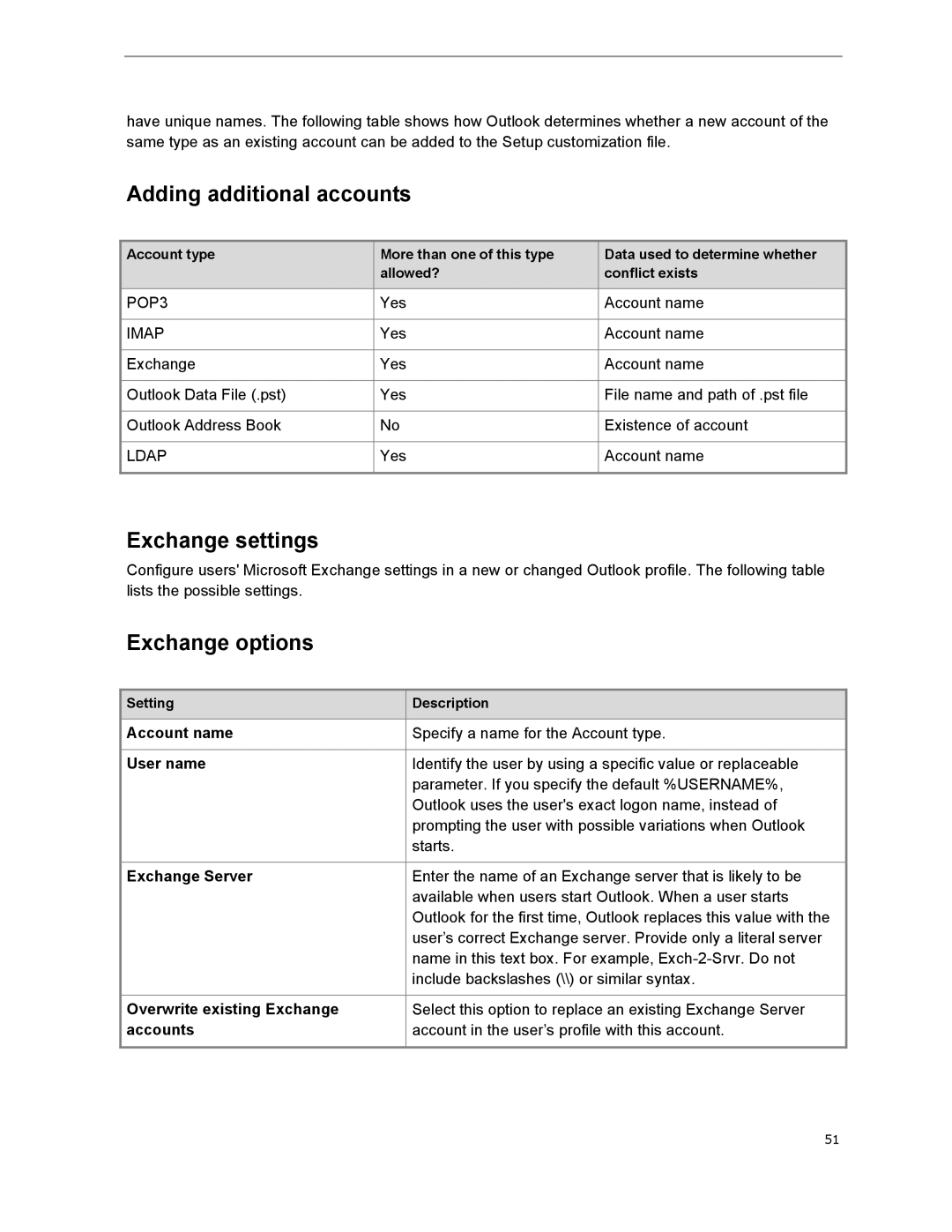have unique names. The following table shows how Outlook determines whether a new account of the same type as an existing account can be added to the Setup customization file.
Adding additional accounts
| Account type |
|
| More than one of this type |
|
| Data used to determine whether |
|
|
|
|
|
|
| |||
|
|
|
| allowed? |
|
| conflict exists |
|
|
|
|
| |||||
|
|
|
|
|
|
|
| |
POP3 |
|
| Yes |
|
| Account name |
| |
|
|
|
|
|
|
|
| |
IMAP |
|
| Yes |
|
| Account name |
| |
|
|
|
|
|
|
|
| |
Exchange |
|
| Yes |
|
| Account name |
| |
|
|
|
|
|
|
|
| |
Outlook Data File (.pst) |
|
| Yes |
|
| File name and path of .pst file |
| |
|
|
|
|
|
|
|
| |
Outlook Address Book |
|
| No |
|
| Existence of account |
| |
|
|
|
|
|
|
|
| |
LDAP |
|
| Yes |
|
| Account name |
| |
|
|
|
|
|
|
|
|
|
Exchange settings
Configure users' Microsoft Exchange settings in a new or changed Outlook profile. The following table lists the possible settings.
Exchange options
| Setting |
|
| Description |
|
|
|
|
| ||
|
|
|
|
|
|
Account name |
|
| Specify a name for the Account type. |
| |
|
|
|
|
| |
User name |
|
| Identify the user by using a specific value or replaceable |
| |
|
|
|
| parameter. If you specify the default %USERNAME%, |
|
|
|
|
| Outlook uses the user's exact logon name, instead of |
|
|
|
|
| prompting the user with possible variations when Outlook |
|
|
|
|
| starts. |
|
|
|
|
|
| |
Exchange Server |
|
| Enter the name of an Exchange server that is likely to be |
| |
|
|
|
| available when users start Outlook. When a user starts |
|
|
|
|
| Outlook for the first time, Outlook replaces this value with the |
|
|
|
|
| user’s correct Exchange server. Provide only a literal server |
|
|
|
|
| name in this text box. For example, |
|
|
|
|
| include backslashes (\\) or similar syntax. |
|
|
|
|
|
| |
Overwrite existing Exchange |
|
| Select this option to replace an existing Exchange Server |
| |
accounts |
|
| account in the user’s profile with this account. |
| |
|
|
|
|
|
|
51
